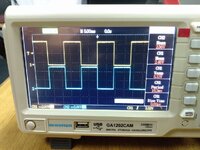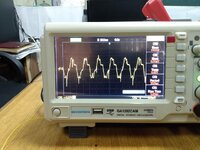Farazniaz
Newbie
Is anyone here have some knowledge about FAIRCHILD FNA41560 Smart Power Module ?
We are working on a project making a 3 phase inverter using fna41560 but we are having issues in getting results. We have used 3 phase PWM signal from arduino UNO (for testing) and did connections all according to the datasheet, in datasheet there is a application circuit diagram everything is done according to that diagram but still we are having troubles.
Resistors and Capacitors values are also according to the circuit (minor differences).
We have given 15V DC for Vcc for IC
For dc link we have given 20 V-35V dc (for testing).
We are working on a project making a 3 phase inverter using fna41560 but we are having issues in getting results. We have used 3 phase PWM signal from arduino UNO (for testing) and did connections all according to the datasheet, in datasheet there is a application circuit diagram everything is done according to that diagram but still we are having troubles.
Resistors and Capacitors values are also according to the circuit (minor differences).
We have given 15V DC for Vcc for IC
For dc link we have given 20 V-35V dc (for testing).
Attachments
Last edited:

